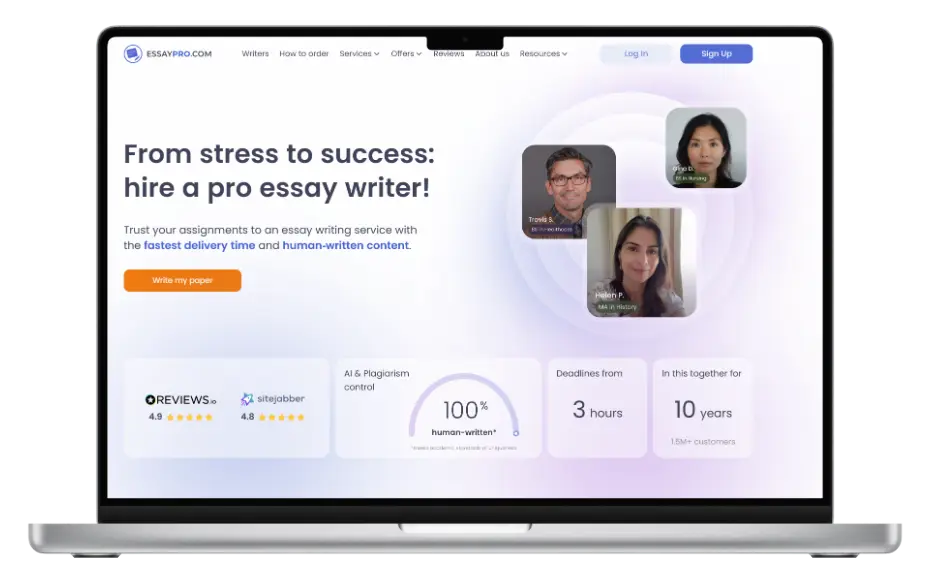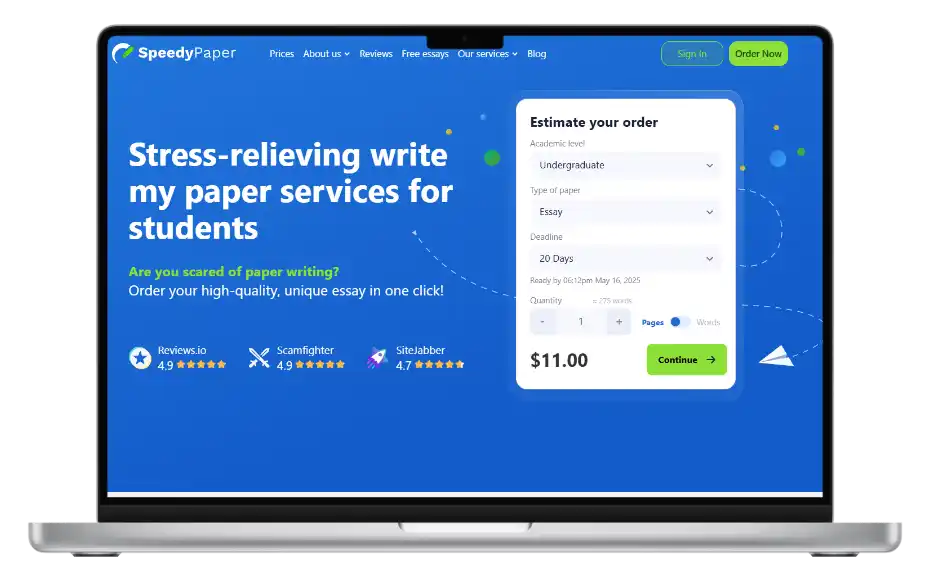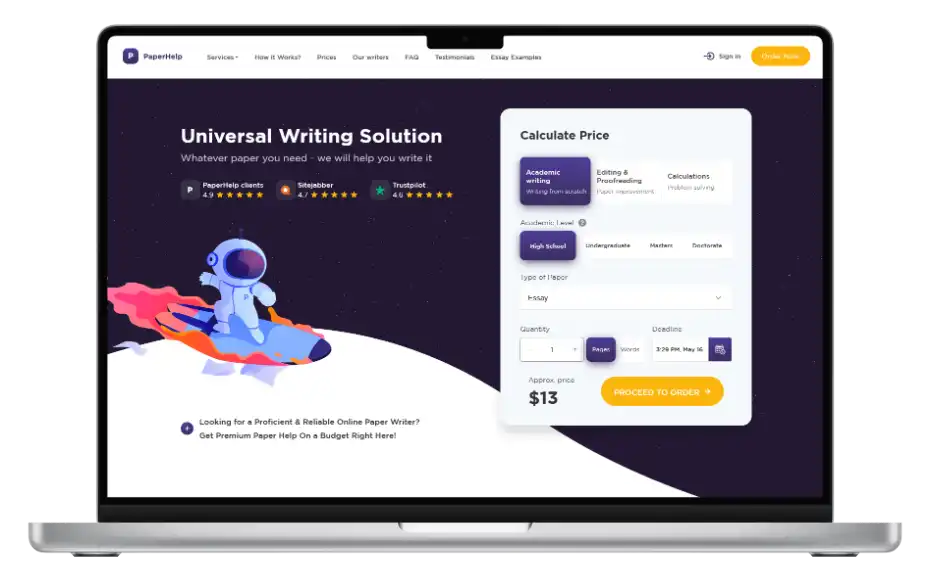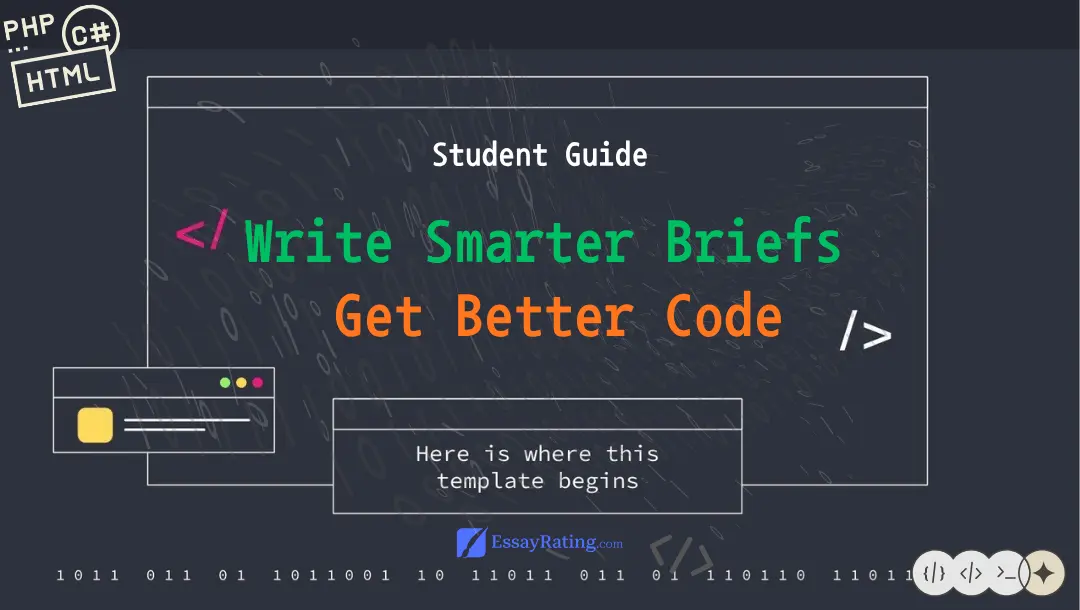Programming Assignment Brief Template (Copy & Use) • 2025
Last updated: September 30, 2025 • 8 min read
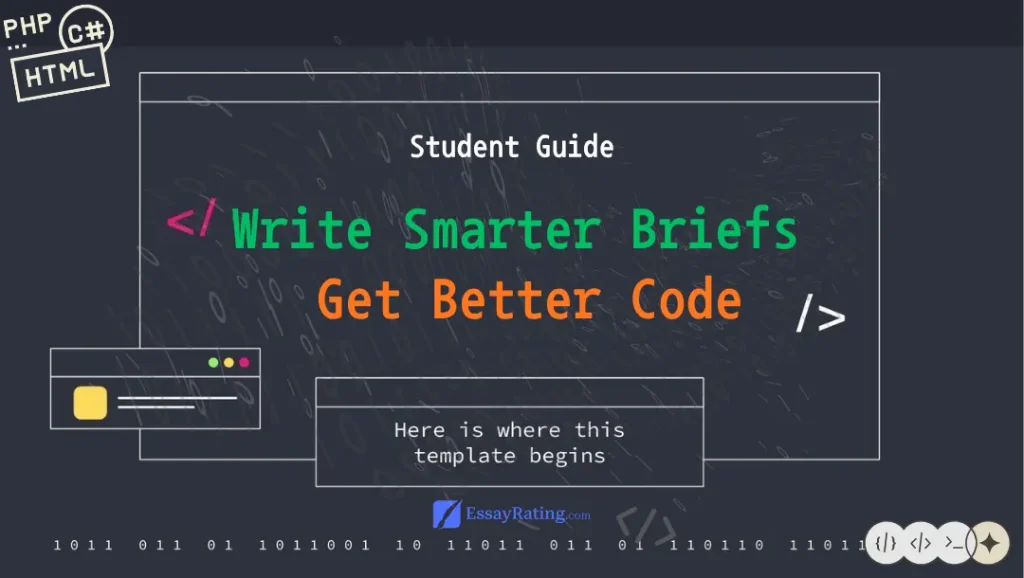
Short answer: A great result starts with a great brief. Use a clear template that spells out inputs/outputs, constraints, deliverables (comments, unit tests, README), and edge cases. Attach 3–5 test cases and note your course rules (e.g., AI restrictions). You’ll get cleaner code, fewer revisions, and something you can defend.
As a team, we kept seeing the same failure pattern: students sent a one-sentence request and then wondered why delivery looked like guesswork. When we tested services ourselves, the projects that landed smoothly all had one thing in common — a precise brief. Below is a copy-ready template, a filled example (Python), and a quick guide for using it. We also link related pieces you may want on your desk: our AI-proof coding help guide and legit options checklist.
The Programming Assignment Brief (Template)
PROJECT TITLE: COURSE / CONTEXT: (e.g., CS101, Week 6 Lab — Sorting)
LANGUAGE & VERSION:
(e.g., Python 3.11 / Java 17 / C++17)
GOAL (1–2 sentences):
(What the program must do and why — graded outcomes or rubric keywords.)
INPUT FORMAT:
(Exact format: files/stdin, types, ranges, units; include one sample.)
OUTPUT FORMAT:
(Exact format: print/file/JSON; order, precision, labels; one sample.)
CONSTRAINTS:
(Time/space targets, memory limits, allowed libraries, coding style rules.)
DELIVERABLES (REQUIRED):
Commented code (docstrings for functions/classes)
Minimal unit test suite (3–5 tests incl. one edge case)
README with setup/run/test steps and versions
Short explanation (5–7 lines) of algorithm choice and trade-offs
TEST CASES (3–5):
(Provide input → expected output pairs; include one edge case.)
ENVIRONMENT:
(OS, toolchain, versions; e.g., Python 3.11, pip, Windows 11)
ALLOWED / PROHIBITED TOOLS:
(Declare course rules — e.g., AI tools not allowed / must disclose.)
REVISION WINDOW:
(Preferred: 7–14 days; response time expectations.)
SUBMISSION FORMAT:
(Zip/repo link; directory layout: src/, tests/, data/, README.md)
DEADLINE & TIMEZONE:
(Exact date/time; timezone.)
CONTACT:
(How to reach you; preferred file formats or notes.)Filled Example (Python, Copy & Adapt)
PROJECT TITLE: CSV Grades Analyzer (Descriptive Stats + Histogram)
COURSE / CONTEXT:
CS101 — Week 6 Lab (Intro to Data Processing)
LANGUAGE & VERSION:
Python 3.11
GOAL:
Read grades from a CSV and print count, mean, median, and stdev.
Also save a histogram.png of the distribution.
INPUT FORMAT:
Path to CSV via command-line arg: grades.csv with header score.
Example rows: 88, 74, 91 (integers 0–100).
OUTPUT FORMAT:
Print lines exactly:
COUNT: X
MEAN: X.XX
MEDIAN: X.XX
STDEV: X.XX
Also save histogram.png in the working directory.
CONSTRAINTS:
Use only standard library + matplotlib.
Time goal: < 1s for 10k rows. Follow PEP8.
DELIVERABLES (REQUIRED):
Commented code with docstrings
Unit tests (pytest) — min. 4 tests incl. edge case
README (setup/run/test)
Short explanation of mean/median/stdev choice; bin strategy for histogram
TEST CASES:
Input: [70, 80, 90] → COUNT: 3 | MEAN: 80.00 | MEDIAN: 80.00 | STDEV: 8.16
Input: [100] → COUNT: 1 | MEAN: 100.00 | MEDIAN: 100.00 | STDEV: 0.00
Input: [] (empty file) → graceful error message: "No scores found"
Edge: [0, 100, 100, 0] → check stats and image saved
ENVIRONMENT:
Windows 11 / Python 3.11 / pip / pytest / matplotlib
ALLOWED / PROHIBITED TOOLS:
Do not use AI-generated code. Provide a human explanation.
REVISION WINDOW:
7 days after delivery; responses within 24 hours.
SUBMISSION FORMAT:
Zip with src/, tests/, README.md, requirements.txt, histogram.png (example)
DEADLINE & TIMEZONE:
Oct 12, 2025 — 23:59 (Europe/Kyiv)
CONTACT:
Reply in the job chat; code in UTF-8; prefer snake_case.What Each Section Achieves (Why It Matters)
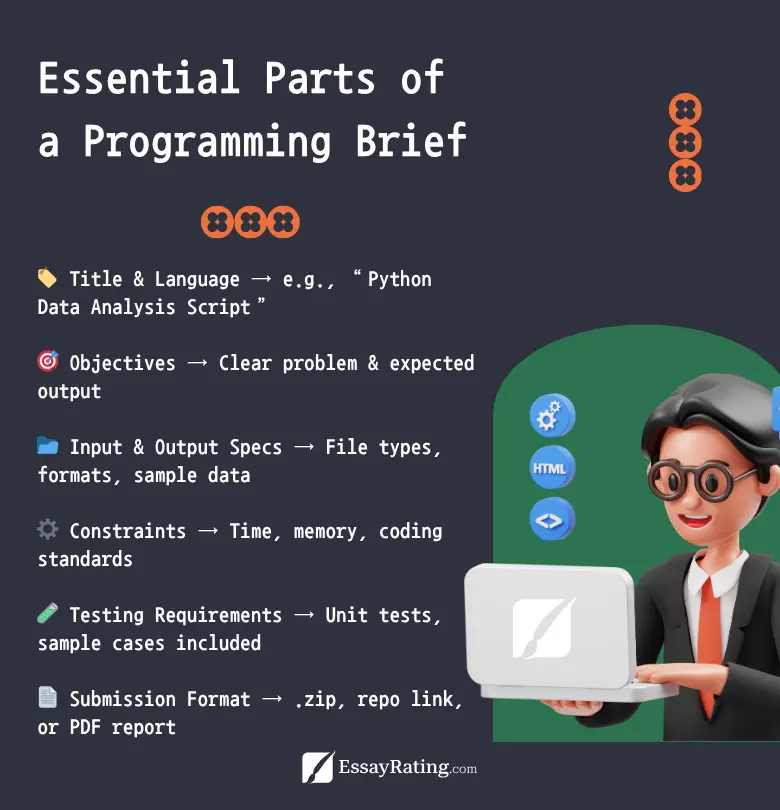
| Brief section | Why it matters | Pro tip |
|---|---|---|
| Goal | Sets the target your grader will check | Mirror rubric verbs (“compute”, “visualize”, “validate”) |
| Input/Output | Removes guesswork that causes rework | Show one sample of each — format + order |
| Constraints | Prevents disallowed libs/approaches | State time/space expectations up front |
| Deliverables | Ensures you get comments, tests, README | Ask for a short rationale (defense paragraph) |
| Test cases | Locks the contract of correctness | Always include one edge case |
| Environment | Stops “works on my machine” issues | Pin versions in requirements / toolchain |
| Tools policy | Keeps you within course rules | Request disclosure if tools are allowed |
| Revision window | Clarifies timelines for fixes | Write a realistic window (7–14 days) |
How to Use This Template Effectively
- Start from the example and edit lines, don’t write from scratch. The structure keeps you from forgetting edge cases or versions.
- Attach test inputs as small files or list them inline. Ask the provider to put them into the unit test suite.
- Protect yourself with clarity: declare allowed/prohibited tools and request a human explanation you can actually learn from.
- Keep a paper trail: brief, chats, drafts, and test logs in one thread. If you ever need revisions, you’ll have all context ready.
Brief Pitfalls & Fixes
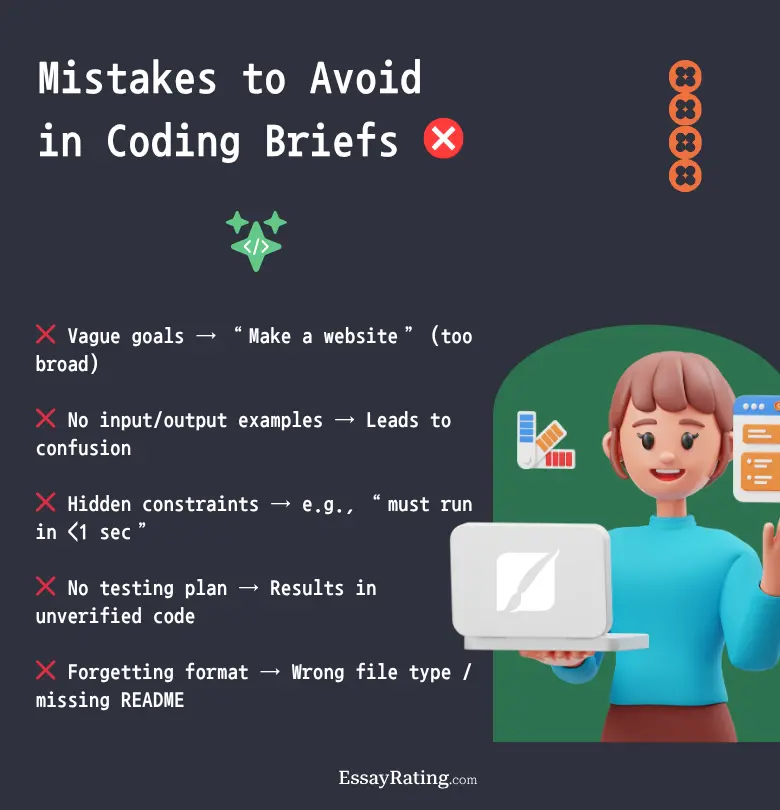
| Common mistake | Why it hurts | Fix in your brief |
|---|---|---|
| “Make it work” (no spec) | Invites wrong assumptions | Write exact I/O formats and one sample each |
| No edge case | Breaks on empty/large/odd inputs | Add one explicit edge case to tests |
| No README/tests | Hard to run, hard to defend | List deliverables as required items |
| Unstated policy | Risk of rule violations | Declare AI/tool rules and disclosure |
| Vague deadlines | Delays + missed windows | Exact date/time + timezone |
Want to see how the right brief improves delivery quality? Compare with our legit options checklist — it uses the same deliverable logic (comments, tests, README, rationale) to filter providers quickly.
Final Verdict
Your brief is the blueprint. Spell out the I/O contract, add test cases, demand comments + tests + README, and ask for a short rationale you can explain under pressure. That single page saves hours of back-and-forth and raises the quality of what you get — whether you code it yourself or work with a vetted helper.
FAQ • Students Ask These Every Week
About the Team
Related Articles
Essay Services You May Like
